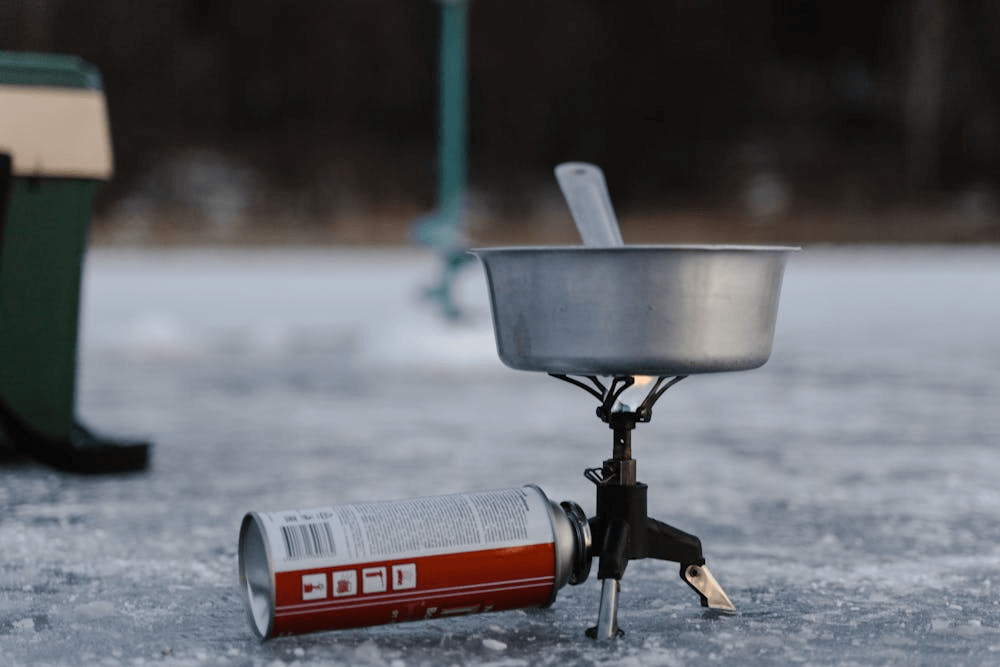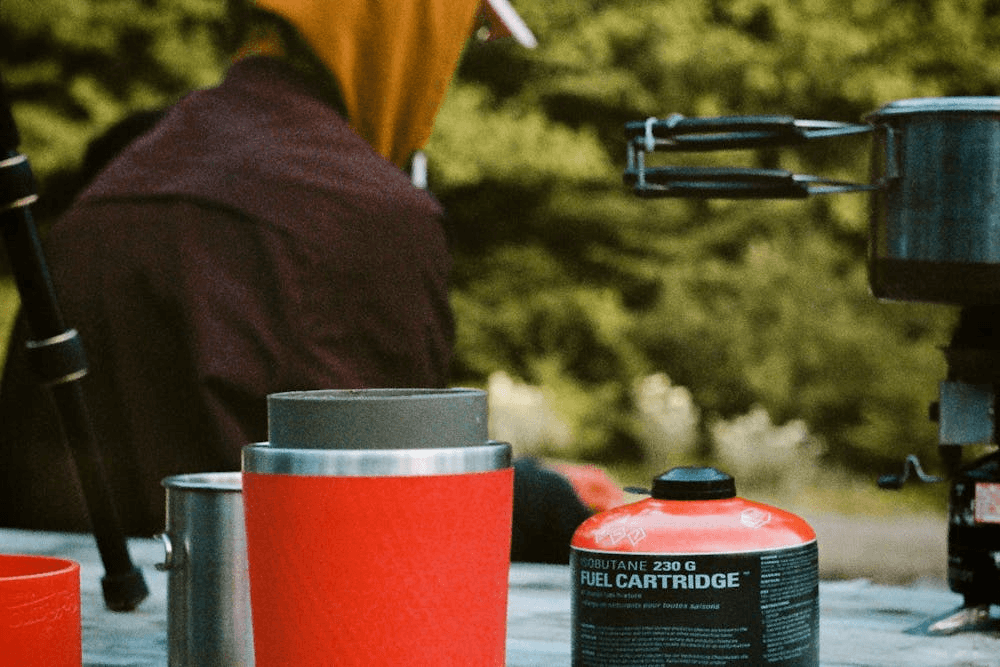📑Table of Contents:
Refilling butane into your lighters or torches doesn’t have to be a daunting task. With the right tools and knowledge, you can ensure your devices are always ready for use. This blog post breaks down the butane refilling process into simple, manageable steps, emphasizing safety and efficiency.

Preparation: Setting the Stage for a Safe Refill
Before you begin, preparing your workspace and gathering the necessary materials is crucial. Here’s how:
- Choose a Well-Ventilated Area: Butane is highly flammable; always refill in a well-ventilated space to avoid inhaling fumes.
- Gather Your Supplies: You’ll need your butane refill canister and device. Make sure the butane canister’s nozzle is compatible with your device.
- Ensure the Device is Empty: Before refilling, make sure your device is empty to prevent overfilling or pressure buildup.
Safety Precautions
Handling butane requires careful attention to safety measures to prevent accidents and ensure personal protection. Here are some essential precautions to take:
Work in a Well-Ventilated Area
Always work in a well-ventilated area when handling butane. Butane gas is highly flammable and can emit fumes that may be harmful if inhaled in high concentrations. Adequate ventilation helps disperse any vapors and reduces the risk of inhalation.
Avoid Ignition Sources
Keep butane away from ignition sources such as open flames, sparks, cigarettes, or electrical appliances that could cause a fire or explosion. Even small amounts of butane gas can ignite easily, so it’s crucial to maintain a safe distance from potential ignition sources.
Wear Protective Gloves
When refilling butane or handling butane containers, wear protective gloves to shield your hands from potential contact with the liquid or gas. Nitrile or rubber gloves provide adequate protection against skin irritation and chemical exposure.
Handle Cans with Care
Handle butane cans carefully to avoid accidental spills, leaks, or punctures. Do not drop or mishandle the cans, as they may rupture or release gas under pressure. Ensure that the caps are securely tightened when not in use to prevent gas from escaping.
Store Properly:
Store butane cans in a cool, dry place away from direct sunlight, heat sources, or flames. Avoid storing them in areas where temperatures exceed recommended limits, as this could increase the risk of leakage or explosion.
Keep Out of Reach of Children and Pets
Store butane products out of reach of children and pets to prevent accidental ingestion or inhalation. Please keep them in a secure location where curious hands or paws cannot access them.
Do Not Overfill Devices
Avoid overfilling lighters, torches, or other devices with butane. Follow the manufacturer’s instructions and recommended fill levels to prevent spills, leaks, or malfunctions that could pose safety hazards.
Dispose of Empty Cans Properly
Properly dispose of empty butane cans according to local regulations and guidelines. Do not puncture or incinerate empty cans, as they may still contain residual gas and pose a risk of explosion.
Butane Refilling Process [Step-by-Step]
Following these steps can lead to a successful and safe butane refill:
- Purge Remaining Butane: Before refilling, purge any remaining butane and air from the device to prevent overfilling. You can do this by pressing the refill valve with a small screwdriver or ballpoint pen until no hiss is heard.
- Attach the Refill Canister: Invert the butane canister and insert its nozzle into the device’s refill valve. Ensure a snug fit to prevent butane from escaping.
- Refill the Device: Press down firmly on the canister to start refilling. You’ll usually hear the sound of butane transferring into the device. A typical refill takes about 5-10 seconds.
- Check for Leaks: After refilling, wait a few moments for any butane to evaporate from the outside of the device, then sniff around the valve area for leaks. No smell should be present.
- Test the Device: Once you’ve confirmed there are no leaks, test your device to ensure it’s working properly. If it’s not igniting, adjust the flame height and try again.
Safety Tips and Best Practices
Refilling butane is a straightforward process, but safety should always be your top priority:
- Use Quality Butane: Invest in high-quality butane to prevent clogging and maintain the longevity of your device.
- Wear Protective Gloves: Butane can cause freeze burns upon contact with skin. Wearing gloves protects your hands during the refill process.
- Avoid Smoking: Never smoke or have open flames nearby while refilling your device with butane.
Additionally, learning how to prepare jasmine rice instant pot is a game-changer for those looking to simplify their cooking process without sacrificing taste. This method guarantees perfectly cooked, fluffy jasmine rice every time, with the instant pot doing most of the work for you.
Monitoring and Safety Checks
- Observing Butane Levels:
- Keep a close eye on the butane levels within the device being refilled. Most devices will have a transparent or translucent window that allows you to see the level of butane inside. Monitor the level as you refill to prevent overfilling, which can lead to leaks or malfunctions.
- Checking for Leaks:
- As you refill the device with butane, periodically check for any signs of leaks. Look for bubbles or hissing sounds around the filling valve or connections, which may indicate that gas is escaping. If you detect a leak, stop the refill process immediately and address the issue before proceeding.
- Ensuring Proper Seal:
- Confirm that the device’s filling valve is securely connected to the butane canister’s nozzle. Ensure that the connection is tight to prevent butane from escaping and maintain a steady flow of gas into the device.
- Inspecting for Abnormalities:
- During the refill process, visually inspect the device and butane canister for abnormalities or irregularities. Look for dents, cracks, or other damage that could compromise the integrity of the equipment. Also, check the butane canister for signs of rust or corrosion, which may indicate a potential safety hazard.
- Testing the Device:
- After completing the refill, perform a quick test to ensure the device functions correctly. Attempt to ignite the device and verify that the flame is consistent and stable. If the device fails to ignite or if the flame appears weak or erratic, troubleshoot the issue and address any problems before further use.
- Maintaining a Safe Environment:
- Throughout the refill process, maintain a safe environment by working in a well-ventilated area and keeping ignition sources away from the refilling area. Avoid smoking, using open flames, or operating electrical appliances nearby to minimize the risk of fire or explosion.
Troubleshooting Common Refilling Issues
Even with careful preparation and execution, you might encounter issues when refilling butane. Here are a few common problems and how to address them:
- Butane Escaping During Refill: If butane escapes around the valve during refilling, this usually indicates a poor fit between the canister nozzle and the device’s refill valve. Adjust the positioning or try a different nozzle adapter if one is available.
- Device Not Lighting After Refill: If your device is cold from the butane, allow it to come to room temperature for a few minutes. Check the flame adjustment dial on your device if it still doesn’t light. It might be set too low or too high. Adjust it gradually and attempt to light it again.
- Low Flame After Refilling: If the flame is unexpectedly low, ensure you’ve purged all air from the device before refilling. Air pockets can reduce the efficiency of butane flow. Additionally, check for any blockages in the burner or valve and clean according to the manufacturer’s instructions.
Besides, proper maintenance ensures your butane devices function reliably and extend their lifespan. Regularly clean the device, especially the burner area, to prevent clogging from dust or debris. Always store your butane and butane-powered devices in cool, dry places away from direct sunlight and extreme temperatures.

Final Thoughts
Mastering the art of butane refilling is a valuable skill that ensures your lighters, torches, and other butane-powered devices are always ready when you need them. By following this guide, practicing safety precautions, and addressing any issues with knowledge and care, you can efficiently refill your devices and maintain them for years of reliable use.
Remember, the key to successful butane refilling lies in attention to detail, safety, and regular maintenance. Follow these tips, and you’ll never have to worry about being left in the lurch by an empty butane device again.
Lastly, if you’re in the mood for a unique and flavorful treat, a chamoyada is a must-try. This Mexican delight blends sweet, sour, and spicy flavors into a refreshing frozen beverage, making it the perfect choice for anyone looking to tantalize their taste buds with something different.





